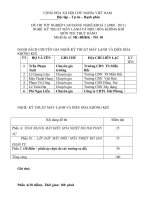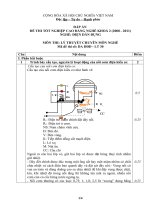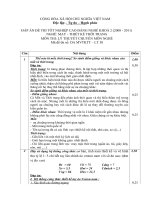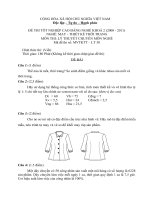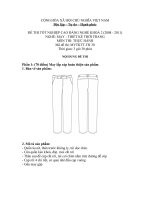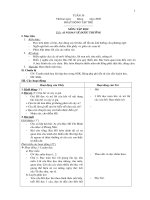30 cyclobutane synthesis
Bạn đang xem bản rút gọn của tài liệu. Xem và tải ngay bản đầy đủ của tài liệu tại đây (1.19 MB, 10 trang )
������������������������������������������������������������������������������������������������������������������������������������������������������������������������������������������������������������������������������������������������������������������������������������������������������������������������������������������������������������������������������������������������������������������������������������������������������������������������������������������������������������������������������������������������������������������������������������������������������������������������������������������������������������������������������������������������������������������������������������������������������������������������������������������������������������������������������������������������������������������������������������������������������������������������������������������������������������������������������������������������������������������������������������������������������������������������������������������������������������������������������������������������������������������������������������������������������������������������������������������������������������������������������������������������������������������������������������������������������������������������������������������������������������������������������������������������������������������������������������������������������������������������������������������������������������������������������������������������������������������������������������������������������������������������������������������������������������������������������������������������������������������������������������������������������������������������������������������������������������������������������������������������������������������������������������������������������������������������������������������������������������������������������������������������������������������������������������������������������������������������������������������������������������������������������������������������������������������������������������������������������������������������������������������������������������������������������������������������������������������������������������������������������������������������������������������������������������������������������������������������������������������������������������������������������������������������������������������������������������������������������������������������������������������������������������������������������������������������������������������������������������������������������������������������������������������������������������������������������������������������������������������������������������������������������������������������������������������������������������������������������������������������������������������������������������������������������������������������������������������������������������������������������������������������������������������������������������������������������������������������������������������������������������������������������������������������������������������������������������������������������������������������������������������������������������������������������������������������������������������������������������������������������������������������������������������������������������������������������������������������������������������������������������������������������������������������������������������������������������������������������������������������������������������������������������������������������������������������������������������������������������������������������������������������������������������������������������������������������������������������������������������������������������������������������������������������������������������������������������������������������������������������������������������������������������������������������������������������������������������������������������������������������������������������������������������������������������������������������������������������������������������������������������������������������������������������������������������������������������������������������������������������������������������������������������������������������������������������������������������������������������������������������������������������������������������������������������������������������������������������������������������������������������������������������������������������������������������������������������������������������������������������������������������������������������������������������������������������������������������������������������������������������������������������������������������������������������������������������������������������������������������������������������������������������������������������������������������������������������������������������������������������������������������������������������������������������������������������������������������������������������������������������������������������������������������������������������������������������������������������������������������������������������������������������������������������������������������������������������������������������������������������������������������������������������������������������������������������������������������������������������������������������������������������������������������������������������������������������������������������������������������������������������������������������������������������������������������������������������������������������������������������������������������������������������������������������������������������������������������������������������������������������������������������������������������������������������������������������������������������������������������������������������������������������������������������������������������������������������������������������������������������������������������������������������������������������������������������������������������������������������������������������������������������������������������������������������������������������������������������������������������������������������������������������������������������������������������������������������������������������������������������������������������������������������������������������������������������������������������������������������������������������������������������������������������������������������������������������������������������������������������������������������������������������������������������������������������������������������������������������������������������������������������������������������������������������������������������������������������������������������������������������������������������������������������������������������������������������������������������������������������������������������������������������������������������������������������������������������������������������������������������������������������������������������������������������������������������������������������������������������������������������������������������������������������������������������������������������������������������������������������������������������������������������������������������������������������������������������������������������������������������������������������������������������������������������������������������������������������������������������������������������������������������������������������������������������������������������������������������������������������������������������������������������������������������������������������������������������������������������������������������������������������������������������������������������������������������������������������������������������������������������������������������������������������������������������������������������������������������������������������������������������������������������������������������������������������������������������������������������������������������������������������������������������������������������������������������������������������������������������������������������������������������������������������������������������������������������������������������������������������������������������������������������������������������������������������������������������������������������������������������������������������������������������������������������������������������������������������������������������������������������������������������������������������������������������������������������������������������������������������������������������������������������������������������������������������������������������������������������������������������������������������������������������������������������������������������������������������������������������������������������������������������������������������������������������������������������������������������������������������������������������������������������������������������������������������������������������������������������������������������������������������������������������������������������������������������������������������������������������������������������������������������������������������������������������������������������������������������������������������������������������������������������������������������������������������������������������������������������������������������������������������������������������������������������������������������������������������������������������������������������������������������������������������������������������������������������������������������������������������������������������������������������������������������������������������������������������������������������������������������������������������������������������������������������������������������������������������������������������������������������������������������������������������������������������������������������������������������������������������������������������������������������������������������������������������������������������������������������������������������������������������������������������������������������������������������������������������������������������������������������������������������������������������������������������������������������������������������������������������������������������������������������������������������������������������������������������������������������������������������������������������������������������������������������������������������������������������������������������������������������������������������������������������������������������������������������������������������������������������������������������������������������������������������������������������������������������������������������������������������������������������������������������������������������������������������������������������������������������������������������������������������������������������������������������������������������������������������������������������������������������������������������������������������������������������������������������������������������������������������������������������������������������������������������������������������������������������������������������������������������������������������������������������������������������������������������������������������������������������������������������������������������������������������������������������������������������������������������������������������������������������������������������������������������������������������������������������������������������������������������������������������������������������������������������������������������������������������������������������������������������������������������������������������������������������������������������������������������������������������������������������������
O
MV2+ = methyl viologen (N,N'-dimethyl-4,4'-bypyridinium)
H3C N
H3CO
Ph
visible light
MgSO4, MeNO2
88%, dr >10:1
O
5 mol% Ru(bpy)3(PF6)2
15 mol% MV(PF6)2
H
H
O
• Limitation of the method: at least one of the styrenes must bear an electron-donating substituent
at the para or ortho position. Aliphatic olefins are not suitable reaction partners.
N CH3
• Mechanism:
*Ru(bpy)32+
strong
reductant
visible light
• Photoredox catalysis can also be used for [2+2] cycloadditions of enones:
N CH3 (MV2+)
H3C N
Me N
+1 e-
N Me
Ph
(MV-radical)
Ru(bpy)32+
photocatalyst
O
O
Ph
product
Ru(bpy)33+
strong oxidant
visible light
Ru(bpy)3Cl2 (5 mol%)
O
O
H
H
Ph
Ph
LiBF4, i-Pr2NEt
MeCN, 89%, dr >10:1
MV2+
-1 e-
+1 e–
OCH3
p-CH3OC6H4
MV-radical
Ph
OR
p-CH3OC6H4
O
O
Ph
H
H
O
O
Ph
CH3
CH3
visible light
Ru(bpy)3Cl2 (5 mol%)
LiBF4, i-Pr2NEt
MeCN, 84%, dr >10:1
O
Ph
O
CH3
H3C
• Upon photoexcitation, the photocatalyst (Ru(bpy)3(PF6)2) acts as a strong reductant, reducing MV
by a single electron.
• The resulting Ru(III) species acts as a strong oxidant, which oxidizes the electron-rich styrene to
produce a radical cation and regenerates photocatalyst.
• The resulting radical cation undergoes cyclization.
Ischay, M. A.; Lu, Z.; Yoon, T. P. J. Am. Chem. Soc. 2010, 132, 8572–8574.
Ischay, M. A.; Anzovino, M.E.; Du, J.; Yoon, T.P. J. Am. Chem. Soc. 2008, 130, 12886–12887.
Du, J.; Yoon, T.P. J. Am. Chem. Soc. 2009, 131, 14604–14605.
Danica Rankic
7
Myers
Chem 115
Cyclobutane Synthesis
• Mechanism:
• An intramolecular variant was also developed.
• The product can be converted to acids, esters, thioesters and amides:
visible light
*Ru(bpy)3
2+
i-Pr2NEt
Li
O
LiBF4
Ph
Ru(bpy)32+
O
N
i-Pr2NEt
+1 e–
Ru(bpy)3+
Li
–1 e–
CH3
O
N
O
visible light
Ru(bpy)3Cl2 (2.5 mol%)
OBn
LiBF4, i-Pr2NEt
MeCN, 87%, dr >10:1
O
Ph
Ph
Me
CH3
Me
O
O
O
H
H
BnHN
CH3
O
O
N H
H
H3C
N
OBn
1. MeOTf, CH2Cl2
67%
2. BnNH2, DBU
CH2Cl2, 98%
OBn
98%, dr >10:1
Li
O
O
Ph
–1 e–
CH3
Ph
H3C
Li
O
O
CH3
H3C
Tyson, E. L.; Farney, E. P.; Yoon, T. P. Org. Lett. 2012, 14, 1110–1113.
O
O
Ph
CH3
• Styrenes and alkenes undergo [2+2] cycloaddition in the presence of an Ir catalyst (III) and light.
The catalyst functions as a photosensitizer.
H3C
CF3
F
• Lewis acid coordination decreases the reduction potential of the enone, facilitating single electron
transfer.
• Limitation of the method: one coupling partner must be an aromatic ketone. Aliphatic ketones and
esters do not under go cycloaddition because of their higher reduction potentials.
Ph
CH3
visible light
III (1 mol%)
CH3
CH3
H
Ph
CH3
H
DMSO, 83%
O
N
F
OH
EtO2C
H3C
O
H3C
N
N
visible light
Ru(bpy)3Cl2 (2.5 mol%)
O
CH3
i-Pr
LiBF4, i-Pr2NEt
MeCN, 73%, dr >10:1
H3C
N
O
CH3
F
N
N
O
F
CH3
O
CH3
EtO2C
DMSO, 86%
H3C
t-Bu
CF3
III
H3C CH3
H
H
•
O
CH3
O
CH3
N
i-Pr
HO
visible light
III (1 mol%)
PF6–
IrIII
Ischay, M. A.; Anzovino, M.E.; Du, J.; Yoon, T.P. J. Am. Chem. Soc. 2008, 130, 12886–12887.
Du, J.; Yoon, T.P. J. Am. Chem. Soc. 2009, 131, 14604–14605.
• !,"-Unsaturated 2-imidazolyl ketones also undergo photochemically induced cycloadditions:
t-Bu
N
HO
HO2C
H3C
H3C CH3
H
H
•
O
LiOH
60 ºC
97%
CH3
(±)-cannabiorcicyclolic acid
Lu, Z.; Yoon, T. P. Angew. Chem. Int. Ed. 2012, 51, 10329–10332
Danica Rankic
8
Myers
Chem 115
Cyclobutane Synthesis
• Other Methods for Cyclobutane Synthesis
• Gold(I)-Catalyzed Ring Expansion of Cyclopropanes
• Brook Rearrangement of 1,4-Dicarbonyls
• Alkynyl cyclopropanols can undergo ring expansion upon treatment with catalytic Au(I):
• Treatment of keto acylsilanes with organolithium reagents produces highly functionalized
cyclobutanes favoring cis-stereochemistry between newly formed alcohols
t-Bu
PhLi, THF
i-Pr
TBS
O
O
–80 " –30 ºC
TBSO
Ph
OH
i-Pr
HO
Ph
67%
HO
OTBS
[(p-CF3C6H4)3P]AuCl (0.5 mol%)
AgSbF6 (0.5 mol%)
O
CH2Cl2, 23 ºC, 98%
i-Pr
single isomer
10%
Mechanism:
• The mechanism is proposed to involve a stereospecific 1,2-alkyl shift:
i-Pr
TBS
O
Ph
O
TBSO
Ph
i-Pr
O TBS O
OH
i-Pr
Ph Li
[(p-CF3C6H4)3P]AuCl (1 mol%)
AgSbF6 (1 mol%)
Ph
O
TBSO
CH2Cl2, 23 ºC, 94%
Brook rearrangement
H3C
H3C
CH3
AuL
• Ring Expansion of Cyclopropanes via Pinacol-Type Rearrangements
TBSO
• Hydroxycyclopropyl carbinols can be ring-expanded by treatment with protic or Lewis acids.
H3C
• Either cis- or trans-substituted cyclobutanones could be produced from a single diastereomer of a
an !-hydroxycyclopropyl carbinol:
BF3•Et2O
(20 mol%)
O
n-Bu
80%
17:1 cis:trans
concerted
migration proposed
THF, 23 ºC
HO
Ph
CH3
H+
Takeda, K.; Haraguchi, H.; Okamoto, Y. Org. Lett. 2003, 5, 3705–3707.
Ph
t-Bu
p-TsOH•H2O
(10 mol%)
O
CHCl3, 23 ºC
Ph
Ph
AuL
O
CH3
H3C
Ph
CH3
Markham, J. P.; Staben, S. T.; Toste, D. F. J. Am. Chem. Soc. 2005, 127, 9708–9709.
n-Bu
Ph
OH
single diastereomer
n-Bu
94%
1:17 cis:trans
thermodynamic
product
Hussain, M. M.; Li, H.; Hussain, N.; Urena, M.; Carroll, P. J.; Walsh, P. J. J. Am. Chem. Soc.
2009, 131, 6516–6524.
Danica Rankic
9
Myers
Chem 115
Cyclobutane Synthesis
• Cu-catalyzed 1,4-Ring closure
• The products can be derivatized:
• Homoallylic sulfonates can undergo borylation/cyclization using a CuI catalyst:
Bn(H3C)2Si
OMs
Ph
CuCl (5 mol%)
dppp (5 mol%)
Ph
B2pin2, KOt-Bu
THF, 23 ºC
H3C CH
3
CH3
O
B O CH3
O
CH3
CH3
CH3
CH3
O
B B
O
O
B2pin2
CuCl (5 mol%)
dppp (5 mol%)
(H3C)2PhSi
OMs
(H3C)2PhSi
H3C
H3C
H3C
H3C
H3C CH
3
CH3
O
B O CH3
1. TBAF, THF
23 ºC
2. H2O2, KHCO3
CH3OH, 23 ºC
OBz
49% (2 steps)
(dppp)Cu
(dppp)CuI-Bpin
R2
OBz
Bpin
H
R1
OMs
+KOt-Bu
Bpin
HO
OMs
(dppp)CuIOt-Bu
R1
OBz
R1
pinB Ot-Bu
pinB!Bpin
OBz
HO
1. TBAF, THF
23 ºC
2. H2O2, KHCO3
CH3OH, 23 ºC
57% (2 steps)
R2
R2
Bn(H3C)2Si
2. PhCOCl, C5H5N
CH2Cl2, 0 ºC
61% (2 steps)
1. LiCH2Cl, THF
–78 " 23 ºC
2. H2O2, NaOH
THF, 0 ºC
3. PhCOCl, C5H5N
CH2Cl2, 0 ºC
73% (3 steps)
R3Si
1. H2O2, NaOH
THF, 0 ºC
B2pin2, KOt-Bu
THF, 23 ºC
• Mechanism:
CuCl
BPin
R2
R1
R2 Bpin
H
tBuO CuIII
dppp
R1
t-BuO
K+
CuI
dppp
Bpin
Ph
BPin
1. BCl3, CH2Cl2
23 ºC
Ph
NHBn
2. BnN3, CH2Cl2
0 ºC, 57%
• Note that in each case the stereochemistry of the starting material is preserved in the product.
H
OMs
KOMs
• Limitation of the method: only aryl- or silyl-substituted olefins react; alkyl olefins do not undergo
borocupration.
Ito, H.; Toyoda, T.; Sawamura, M. J. Am. Chem. Soc. 2010, 132, 5990–5992.
Markham, J. P.; Staben, S. T.; Toste, D. F. J. Am. Chem. Soc. 2005, 127, 9708–9709.
Danica Rankic
10



